Religiosity Major Influence on Attitude Toward Judicial Overhaul
The reform proposal and the resulting protests brought to light and to a large extent also created conflicts on religious and ethnic grounds. The findings of this research reveal a strong relation between levels of religiosity and support or opposition to the judicial overhaul.
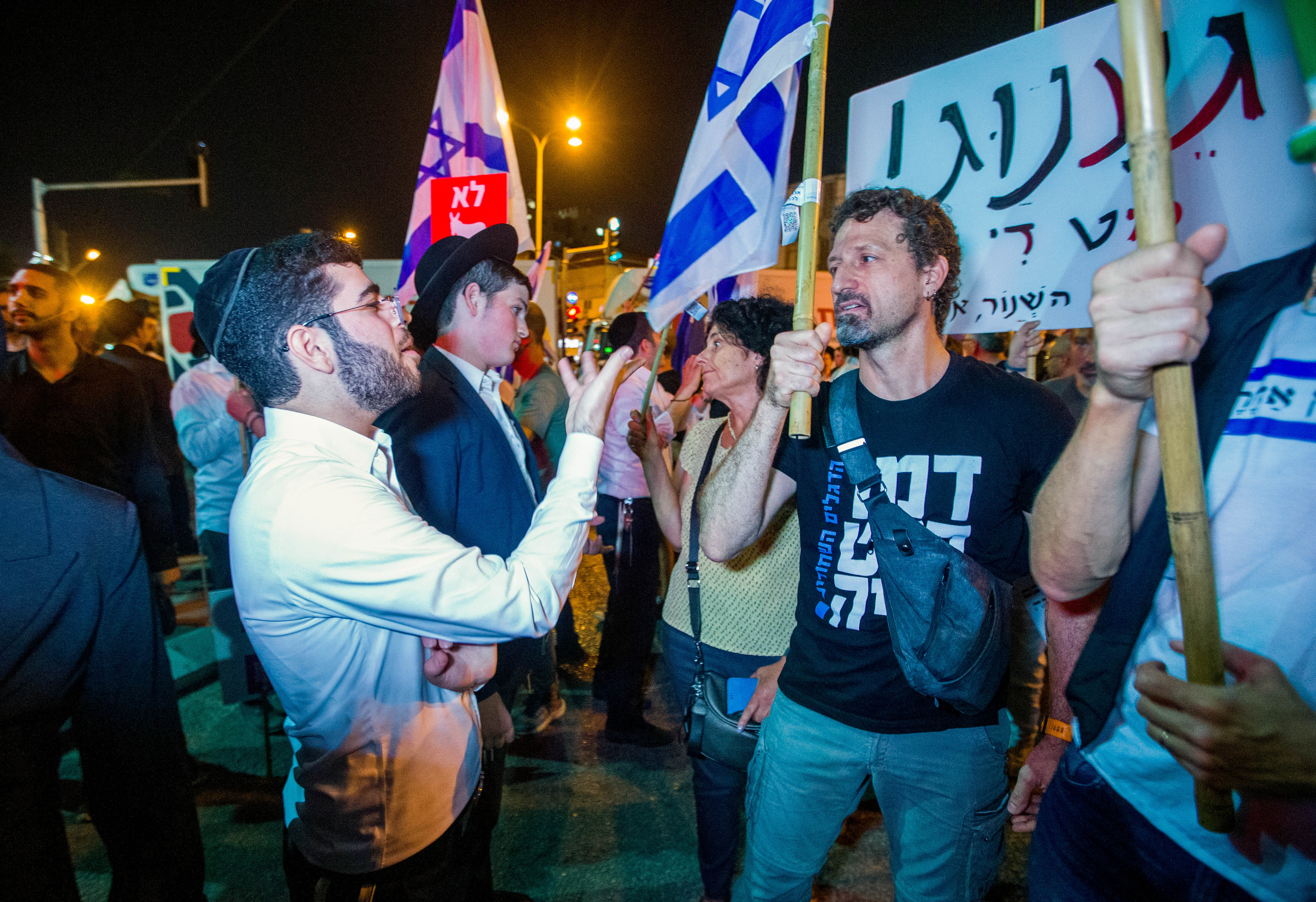
Photo by Flash90
The reform proposal and the resulting protests- brought to light and to a large extent also created conflicts on religious and ethnic grounds. Since the establishment of the state, Israeli society has grappled with religious tensions, surfacing periodically against the backdrop of political and social events. However, these tensions have escalated sharply over recent months.
Religion-based conflicts have been particularly bitter throughout the protests and even before. The make-up of the coalition – comprising only National-ultra-Orthodox and ultra-Orthodox parties together with the Likud – sowed the seeds for a flare-up. This arena then heated up when various processes were set in motion, including moves to make fundamental changes regarding core issues in the sphere of religion and state, while others involved granting a relative advantage, or in some cases a clear privilege, to religious and ultra-Orthodox groups. Such core issues include the Conscription Bill, which reopened the discussion on equalizing the burden of national service; the proposed Basic Law on studying Torah; and calls from National-ultra-Orthodox and ultra-Orthodox politicians to avoid railway infrastructure work on Shabbat. This list must also include the desire to "settle accounts" given the composition of the government. Specifically, ultra-Orthodox politicians sought to do so in light of the history of Supreme Court's verdicts on issues of religion and state.[1] Religious-right circles were eager to revenge what they saw as injustices brought about by the disengagement plan, and the Oslo Accords; and to further manifest their ongoing ambition to complete a process of ‘Elite change’.[2]
And so, it is worthwhile to reexamine Israeli citizens' opinions on the reform, taking into account their religious affiliation, which in turn is significantly associated with their voting patterns.
A series of surveys conducted by the Viterbi Family Center for Public Opinion and Policy Research in the Israel Democracy Institute from January-April 2023 examined the extent of support for the reform and for its various components, broken down by different background characteristics. In each survey, respondents were asked to define their level of religiosity.
In a January 2023 survey, respondents were asked a general question as to their stance on the judicial reform. A breakdown of the responses by location on the religious spectrum reveals a strong correlation between the level of religiosity and the extent of support for the reform. Only 16% of secular Jews described the reform as "very good" or "pretty good", compared to 22% of the traditional-non-religious, 48% of the traditional-religious, and 66% of the Orthodox and ultra-Orthodox (see Figure 1).
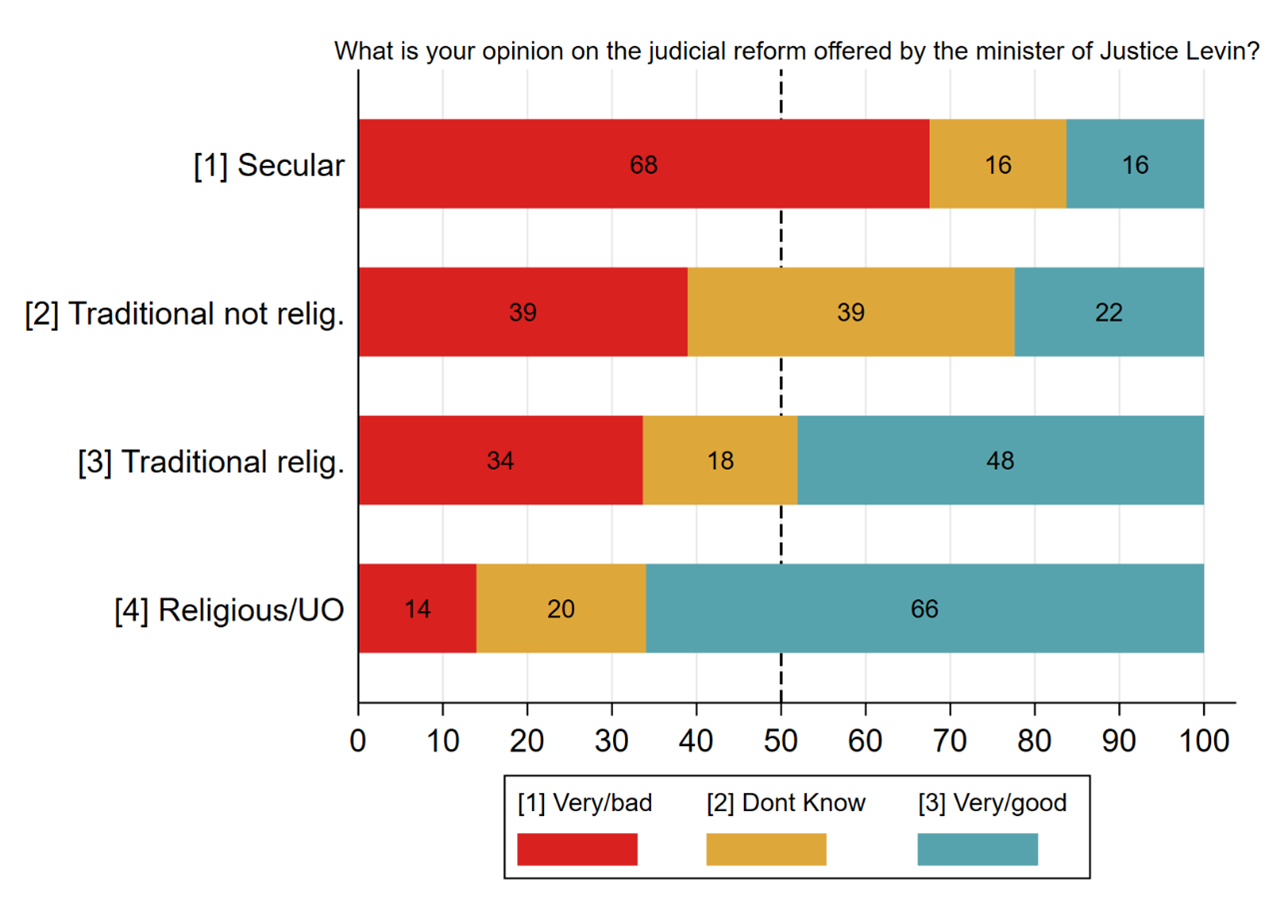
Religiously based gaps in attitude towards the reform became much broader during the following months. In comparison to January, when a significant percentage of respondents in each group had no definitive opinion on the reform, by April the percentage of those who viewed the reform in a negative light rose among secular and traditional-non-religious Jews. At the same time, the percentage of those defining the reform as positive, increased among all groups, except among secular Jews (see Figure 2)
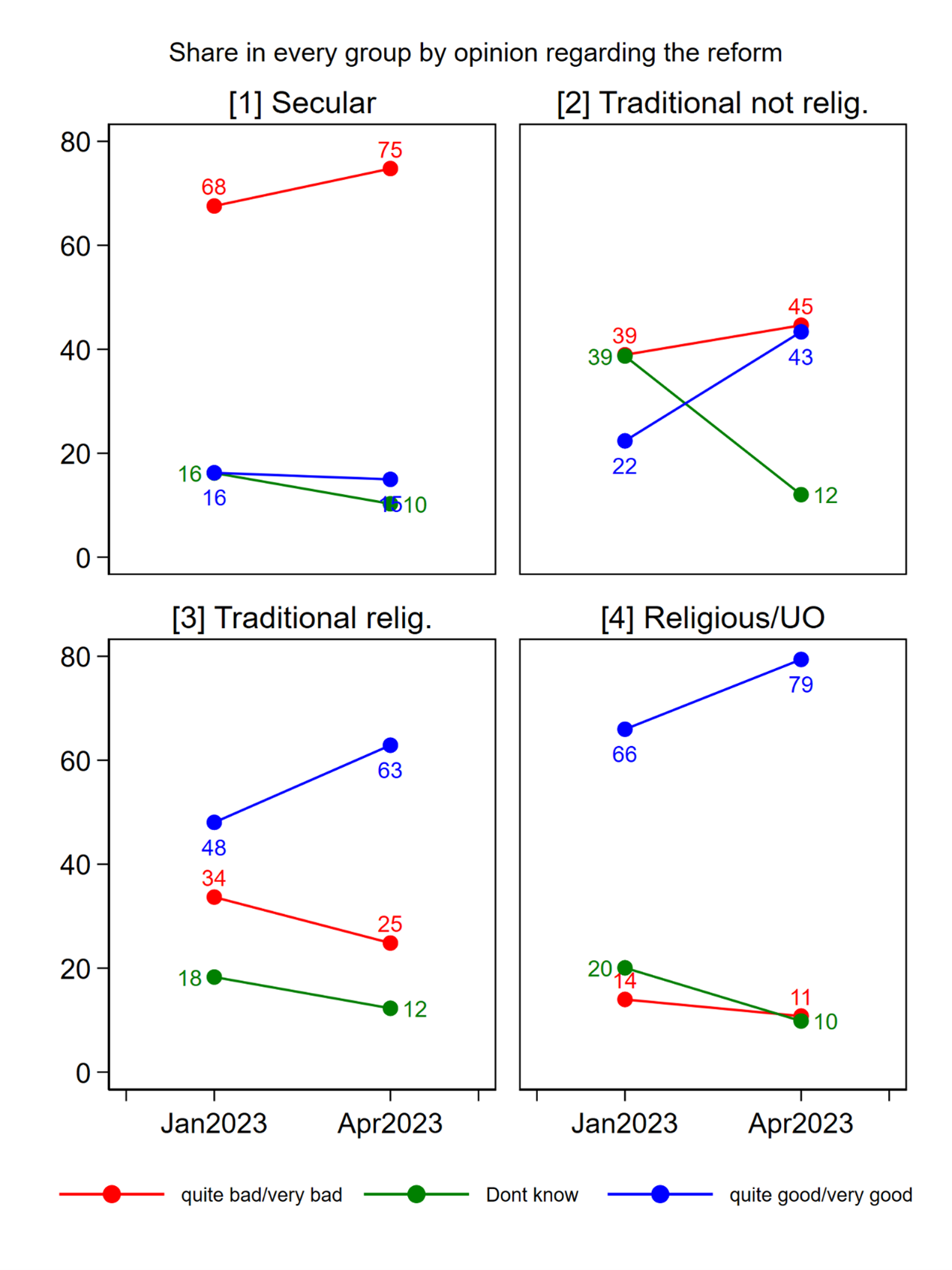
It is also important to note that the positive association between support for the reform and level of religiosity – the more religious, the more support for the reform – exists among both coalition voters and opposition voters (see Figure 3). In other words, religiosity is an important determining factor in and of itself, over and above its association with voting patterns.

In surveys conducted during February and March, respondents were asked about their support for the override clause legislation, cancellation of the Standard of Unreasonableness, and changing the composition of the committee for selecting judges. Here too, support for the reform increases with the level of religiosity, i.e., the more religious a respondent is, the more likely he or she is to support the reform, including its specific components. This also applies to the override clause (Figure 4) and to the repeal of the Standard of Unreasonableness (Figure 5).
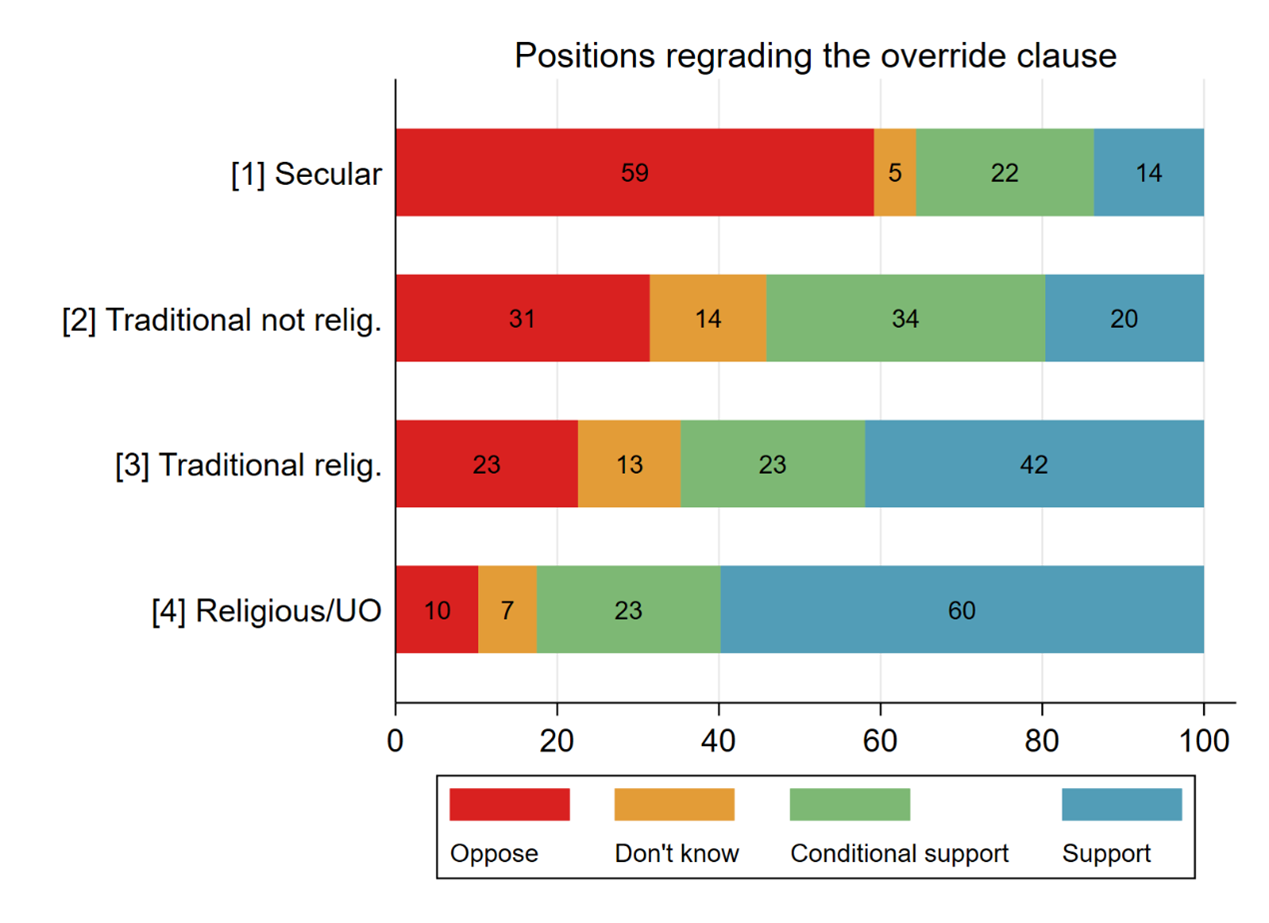
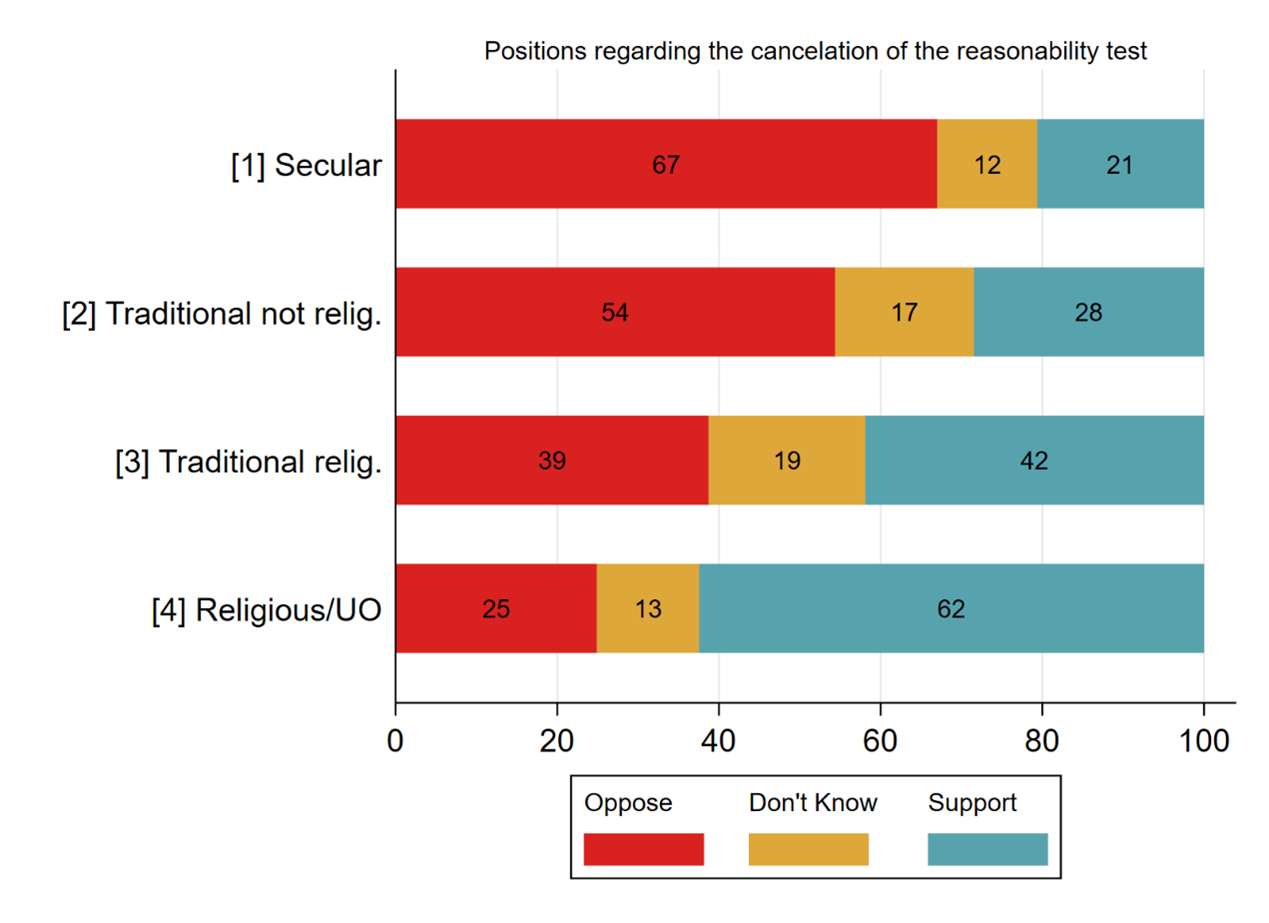
However, the gap between respondents by level of religiosity drops sharply when taking into account levels of education. Those with an academic education generally have a stronger tendency to oppose the repeal of the Standard of Unreasonableness. In addition, within each level of religiosity, opposition to the reform is more prevalent among those with higher education levels. Furthermore, the gap between secular and traditional Jews, in terms of the percentage of opponents, is smaller than among those with higher education (Figure 6).
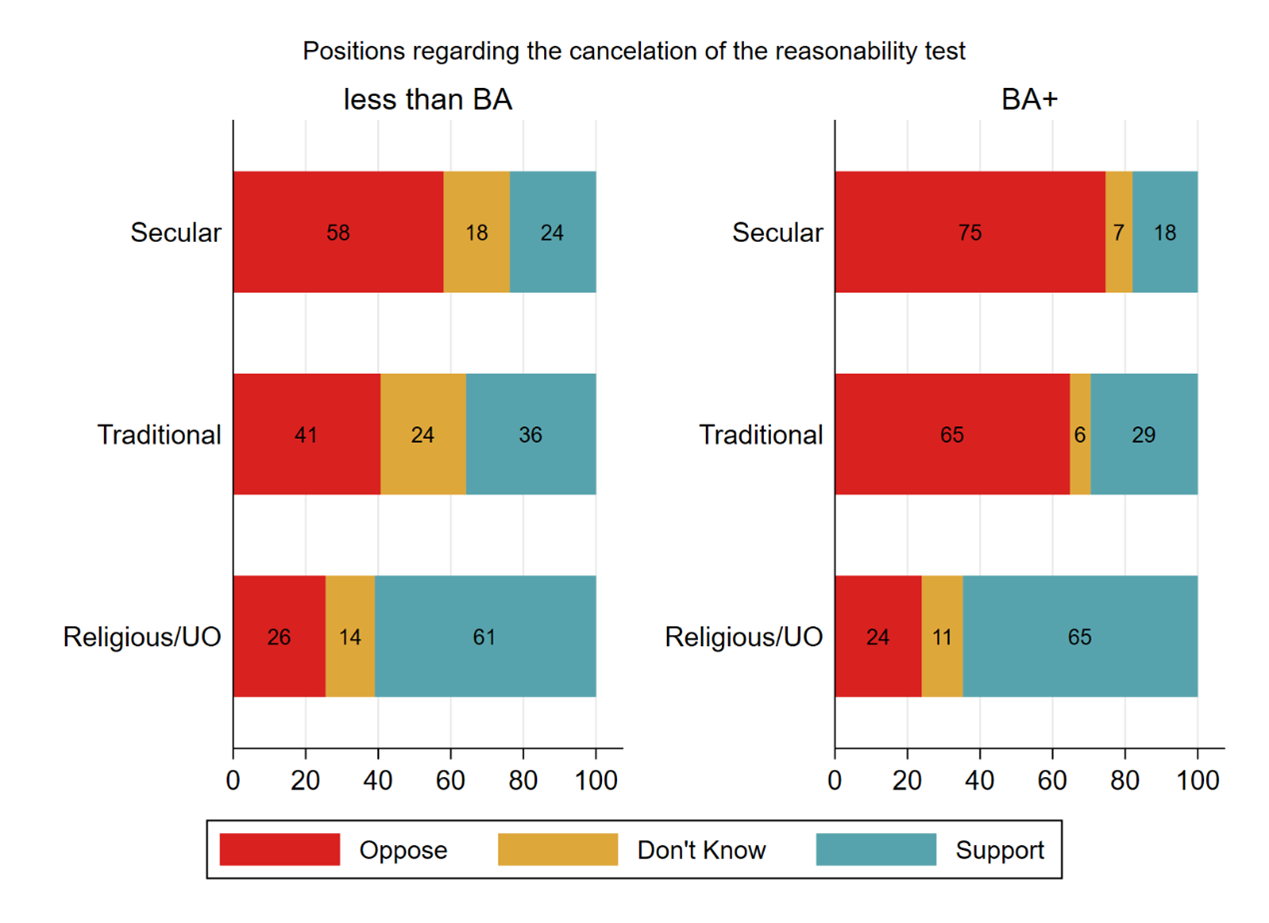
A similar picture appears when examining positions on changing the judge selection committee (Figure 7).
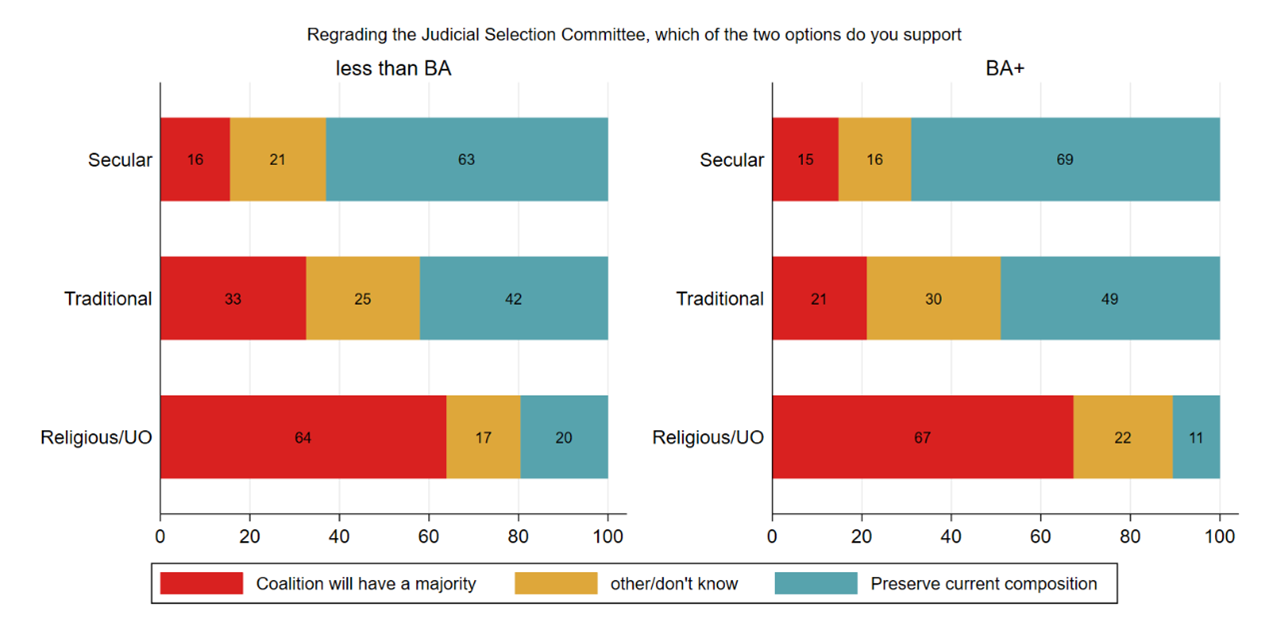
Finally, religiosity plays an important role in the assessment of the possible consequences and the costs of the reform. Figure 8 shows the percentage of respondents, of all levels of religiosity, who are either “very concerned” or “concerned” about the possibility of various scenarios resulting from the passage of the reform.

It appears that the level of religiosity explains significant differences in the assessment of risk: on average, the less religious a respondent, the more concerned he or she is about the possibility of a change for the worse – in every one of the areas specified in the survey, even though some of these areas are not particularly related to the secular group's special interests or values. Thus, for example, about 20% of the Orthodox and ultra-Orthodox respondents expressed concern about the possibility that the reform will cause serious harm to private savings, while among the traditional and secular respondents, this level reaches 70% and 80%, respectively.
Therefore, there is a correlation between opposition to the reform and assessment of its consequences: Secular respondents, among whom opposition to the reform is more prevalent are also more concerned about its consequences; religious respondents, who tend more to support the reform, are less concerned about its consequences. This result can be explained in one of two ways. Either the secular population assumes a higher risk of these scenarios being realized, compared to their religious peers, and they are more sensitive to what is happening in these spheres, and therefore tend to oppose the reform (and vice versa among the religious); or, secular Jews tend to oppose the reform, for whatever reason, and therefore attribute a higher likelihood of these scenarios being realized, allowing them to maintain a sense of internal consistency (and vice versa among the religious). In addition, it is striking that for eight out of the ten scenarios presented, traditional respondents were closer in their assessments to secular respondents than to religious and Haredi respondents. That is, like secular respondents, they report a high level of concern about the possibility of these scenarios coming about as a result of the reform.
Summary and Conclusions
The findings reveal that the intensity of the conflict on religious grounds is more intense than anything we have seen in many years. This conflict – and specifically in the context of considerable convergence between the religious axis and the ideological-political axis – has the potential to destroy any possibility of stabilizing social relationships. A conscientious leadership must take this potential threat into account.
The large gaps in the assessment of the potential costs of the reform indicate that there is good reason to continue efforts to describe reality as it is – prior to any dispute over framing and narrative. It is worthwhile to continue working to clarify the potential costs inherent in the reform, since recognizing these costs could affect the public's attitudes on the continued efforts to work towards its adoption.
Itamar is a researcher in the Center of Governance and the Economy at IDI and hold a PhD from the School of Public Policy, Hebrew University
[1] Ynet, 22/2/2023
[2] Kan News, 14/2/2023, Srugim website, 14/2/2023.
